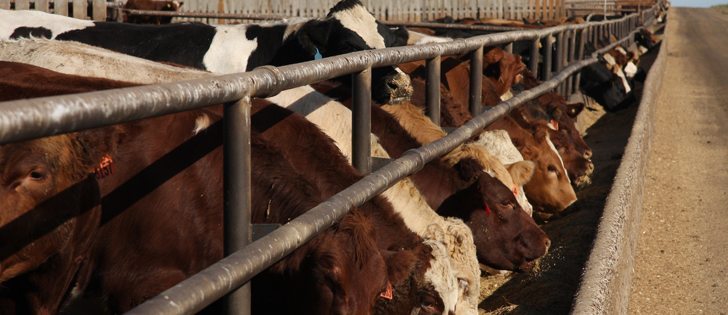Falling corn prices | Feedlot operators are suffering from high grain prices and may see corn as an attractive alternative
Barley and oat producers have enjoyed price rallies recently, even as the values of sister commodities have fallen.
However, some analysts warn that the stronger prices now might mean weaker demand in the future. The more that buyers pay now, the less they will want to buy in the future, especially when they have alternatives.
“The bleeding in the livestock (feeding) sector is pretty severe,” said Errol Anderson of Pro Market Communications, referring to feedlot operators who are caught between high costs for feeder cattle and high feed grain costs but who are unable to push slaughter cattle prices higher.
Read Also

Pakistan reopens its doors to Canadian canola
Pakistan reopens its doors to Canadian canola after a three-year hiatus.
“There’s got to be a balance and the balance is out of synch.”
Mid-prairie farmgate old crop barley prices of about $5 per bushel are hurting feeders, who have seen fed cattle prices tumble since March.
Feeders will put fewer cattle on feed if the losses continue, which will mean lower demand for 2012-13 barley, Anderson said.
Oat prices are also rewarding growers but punishing animal feeders. Farmers saw oats as one of the two or three worst-returning crops for 2012-13 for most of the winter because of low forward prices. However, oats have rallied since the second week of March and caught up much of the ground lost to competing crops over the winter.
Relative returns before seeding are keenly watched because oats have to compete with other prairie crops for the same acres. December oats have rallied recently from $3.10 per bushel to $3.40.
However, while oats were catching up to other prairie crops in terms of relative profitability, U.S. corn prices were falling. The further that corn prices fall or oats rise, the more horse feed manufacturers in the United States will try to substitute corn for oats.
“As we’re trying to fight for acres, we’re going to be losing demand,” said Strychar, who has reduced his expected horse feed consumption number for 2012-13 by 50,000 tonnes because of the changing corn-oat price spread.
“Prices for oats have turned around and that’s a two-edged sword.”
Strychar said the best long-term defence against this kind of unpredictable spread swing is to create demand specific to oats. Buyers who demand oats because they are better for horses than corn or other feeds will not be moved as much by price differentials.
“We’re not dealing with it as a price issue but as a value-added proposition,” said Strychar, who has been meeting with horse feed experts across the U.S. as part of his work with the Equine Feed Oat Project.
Maintaining oat demand in the coming year will probably rely on more than price, Strychar said, because oats stocks could slump and corn supply double.
In its May 10 supply and demand reports, the U.S. Department of Agriculture predicted that corn stocks will double in 2012-13, which is what’s been undercutting corn prices.
At the same time, oat stocks are low and could get lower.
“We’re closer to the record low than we are to the average,” said Strychar.
Anderson said cheap corn compared to relatively expensive barley will cause Canadian feeders to import corn. He thinks farmers should take advantage of today’s prices on both old crop and new crop.
Old crop barley at $5 is “one hell of a price. To me that’s like $14 canola,” said Anderson.
New crop bids are 50 to 80 cents per bushel lower, but producers shouldn’t expect them to stand if corn prices keep falling and feeders bring in corn.
“I’m guessing that corn’s going down to $4.50, and if it does our barley prices are doomed,” said Anderson.
















